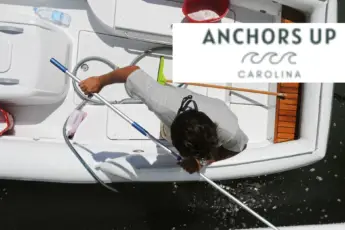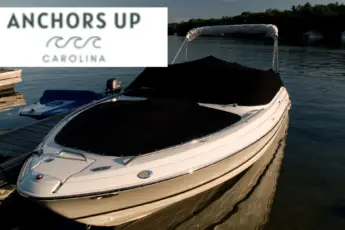When it comes to boating in the coastal regions of North Carolina, South Carolina, and Georgia, safety is of the utmost importance. When venturing offshore or traveling on the water to a different coastal town, filing a float plan adds a level of security in the event of an emergency. The process of completing and filing a float plan is simple and should be done.
What Is A Float Plan
A float plan includes many details to help aid authorities in a search and rescue mission if necessary. When it comes to what information should a float plan contain. The plan includes your end destination, when you plan to arrive, type of safety equipment onboard, information on the vessel, and the number of persons aboard the boat.
Is a Form Available To Complete A Float Plan
Yes, the United States Coast Guard has a float plan template that can be completed with all necessary information. Use the link to download the float plan and fill in the details. Utilizing the form will save a great deal of time and effort and, most importantly, help prevent you from leaving off valuable information in the event of an emergency.
Who Should A Route Plan Be Filled With
A completed boating float plan should be passed off to a reliable person that you can trust. This person can make the difference between life or death. The boater and the person holding the float plan should be in communication upon departure and arrival to avoid notifying a rescue agency mistakenly.
One of our best suggestions is to use a friend who is also a boater. Boaters tend to take these types of things a bit more serious than a non boater. You are going through the trouble of creating a plan, you need to make sure that someone is paying attention to it and available should an issue come up.
When Should A Boater and Float Plan Recipient Communicate
Communication is essential. Miscommunication or lack of communication can cause costly mistakes. A boater and a route plan recipient should keep in constant communication. Ensure that you and the route plan recipient understand how you plan to communicate. Let them know that they will be hearing from you multiple times.
Departure Delays
If the boater adjusts the schedule as filed on the float plan boat, the recipient must be aware of changes. A delayed departure will result in a delayed arrival. If you do not communicate this to the recipient of your route plan, they may be looking for you to arrive and not realize there was a delay. When you get underway it is best to let your route plan recipient know.
Course Changes
Should the planned navigable course change, make sure to update the paperwork, or search parties will be looking in the wrong area. Course changes can come up for a variety of reasons. If you have an issue with the course that you are on, it is fine to make the change. Just be sure to communicate.
Arrival
Once the boater has arrived safely at the destination, the person holding the boat float plan should be notified immediately. Get the boat secure and make the call before losing track of time or remember to call altogether.
Float Plan Considerations
Keep in mind that things do not always happen as planned. Weather, mechanical issues, or other circumstances can impact departures, scheduled travel time and routes, and arrival time. Your original route plan may look nothing like your completed route plan and this is to be expected. Allow some room for changes and errors along the way. Some of the most common issues that you will see come up include mechanical issues and weather issues.
Mechanical Issues
Mechanical issues can arise before the start of the trip or during the voyage. If possible, contact the person who has the route plan on file about mechanical problems and projected arrival times. Keep in mind that this isn’t always possible.
Weather
A boater may have no choice but to detour from the planned route because of the weather ahead. Notify the person who has the plan. Also, weather such as high winds and seas can slow the boat speed and delay arrival times. Experience boaters will be prepared for any weather condition that comes their way. Being flexible with your route to avoid hazardous weather is essential.
What Sized Boat Should File A Float Plan
The size of the boat has no impact on whether you should or should not file a float plan. If you are traveling from point A to point B or running well offshore, a float plan should be filled for all vessel sizes.
Are You Ready To File Your Float Plan
The next time you’re venturing offshore or planning a trip aboard a boat to a new marina or anchorage, make sure to file a route plan because now you know what should a float plan contain. Float plans most importantly save lives but can also avoid loss of your vessel and items onboard. The process is simple when following the United States Coast Guard form. Lastly, pass off the float plan to someone you trust. Your life and passenger’s lives depend on it.








Leave a Comment
You must be logged in to post a comment.